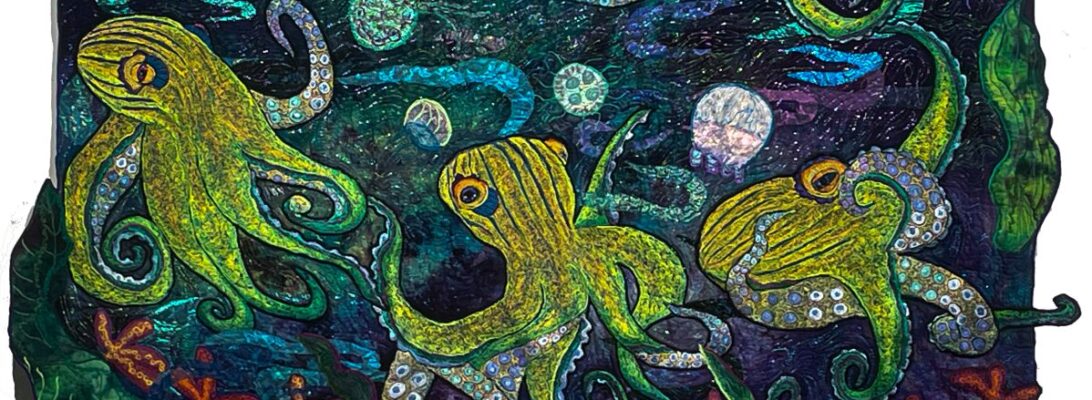
Like most little girls, I had a pink bedroom. Unlike most other girls, mine was seafood bisque pink with brown. Needless to say, I’m hesitant about using pink. I certainly don’t wear it..
But in spite of my feelings about pink, I know better than to dismiss a color from the color wheel. They’re all in relationship with each other. It’s like putting up with weird Uncle Fred because you really like his wife Ethel. They are deeply connected and you get the one when you choose the other.
And some things are just unabashedly pink. Like roseated spoonbills. So here we are.
She’s a nesting bird, and I loved her pink and brownish background. You can push past your color preferences when you try,


These flowers were mostly white sheers and lace, stitched over in pinks, cream, and whites. The white glowa behind and the thread gives a pink blush. To my mind, they register as white flowers but the shadows echo the burgundy background. It’s a delicate look.
I haven’t done lady slippers for a while. And I wanted a white creeping vine around the outside. But you can’t make something just white. It has no dimension. So this time I used white sheers to form the flowers, but I pulled in other colors to shade them. Because the background is fuchsia, I went for soft pink shading for the white flowers. For the lady slippers, I went into brighter pinks and burgundies, with the white shining through just a bit.
Now, what makes the color of a flower? Or any other thread work? Is it the thread? Or are there other factors.
No matter how much you stitch over something you always see the background. Always. Usually I am for a background color that accentuates the threadwork.

What happens if it doesn’t blend or match? It glows from beneath. I’ve started with iridescent white organza to create an inner glow for the lady slippers.

I stitched from both sides, leaving just a bit of plain iridescent organza in the center to round out the flower. The iridescent background creates an inner glow and a subtle pink.

Here I chose pink sheers and stitched over them with various pink/apricot threads. The effect is vibrant and full of color.

The background I stitch over is as much a part of the color as the threadwork. The differences are subtle but very cool. The combination of light and color creates dimensional blooms that glow.


















































